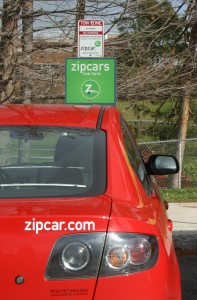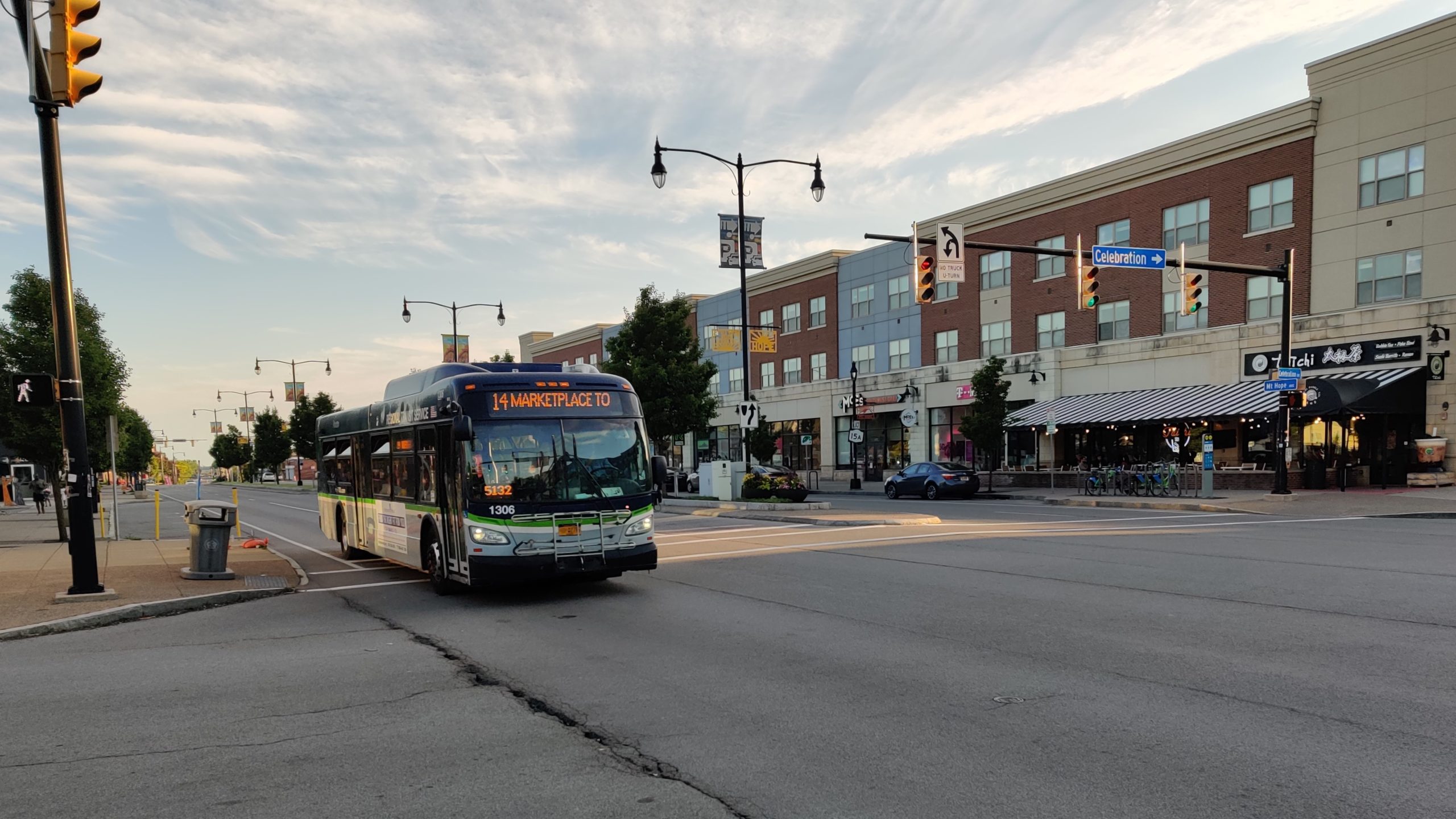With the transportation sector making up 27% of greenhouse gas emissions in the United States (the largest share), it’s important to find ways to reduce our use of petroleum based transportation. A recent survey from the Department of Transportation and Parking Management found that the vast majority of University employees (83%) drove alone to work and that many were open to alternative transportation options. The Department specifically looked at the viability of a free RTS bus pass. Other alternatives include carpooling via 511NY Rideshare, and biking to work.
Survey Results
The Department of Transportation and Parking Management collected survey responses from over 5,000 employees on how they get to and from work and if a free bus pass program could encourage the use of RTS transportation. They found that 83% of respondents drove alone to work while only 3% carpool with other employees, 2% use RTS, 2% walk or bike, 2% utilize the University shuttles, and the final 2% use other modes. When asked about a free RTS bus pass for one year in place of a parking permit, 10% of respondents with a current parking permit and 41% of those without one were willing to try one. The department also found that employees value convenience and flexibility is the most important factor to their commute, followed by travel time. Respondents noted that using the bus pass came with benefits such as no cost, less pollution, convenience, and the ability to multitask while commuting.
As respondents noted, the RTS buses create less pollution than if they drove on their own. As of July 2021, there are ten electric buses within the RTS fleet. RTS, along with four other transit systems in New York State, are required to electrify 25% of their respective fleets by 2025 and have zero emissions by 2035.
Based on these results, Parking has partnered with RTS to offer a new program called U-Pass. U-Pass offers eligible employees unlimited free rides on RTS buses. As the University’s U-Commute program notes, this can save employees nearly $700 on an annual RTS pass. If employees forgo using their car almost entirely, this can save them up to around $8,500.
Carpooling
 As previously noted, only 3% of survey respondents carpool to work. One way to increase this percentage is 511NY Rideshare. Carpooling to work is a great way to lower emissions as it decreases the amount of cars driven. It can also save people money, as they are now splitting gas costs with one or more people. 511NY Rideshare allows users to enter their starting and ending locations to find potential matches. Once users get past the basic search, they can change their starting and ending location radii to narrow down or widen their options. They can also select whether they are a driver, rider, or both, the trip type (recurring vs. one time), and can select days they need plus estimated arrival and return times. Users can also use 511NY Rideshare to find people to bike with or take public transportation with if they would like some company.
As previously noted, only 3% of survey respondents carpool to work. One way to increase this percentage is 511NY Rideshare. Carpooling to work is a great way to lower emissions as it decreases the amount of cars driven. It can also save people money, as they are now splitting gas costs with one or more people. 511NY Rideshare allows users to enter their starting and ending locations to find potential matches. Once users get past the basic search, they can change their starting and ending location radii to narrow down or widen their options. They can also select whether they are a driver, rider, or both, the trip type (recurring vs. one time), and can select days they need plus estimated arrival and return times. Users can also use 511NY Rideshare to find people to bike with or take public transportation with if they would like some company.
Biking
An even smaller percentage of respondents reported that they bike and/or walk to work. Biking and walking are easily the most environmentally friendly modes of transportation, as the only emissions involved in biking are from the initial construction of the bikes. There are over 500 bike rack spaces across University campuses and the Medical Center. Biking is also low cost, as the unenclosed spaces are free while there are $40 permits available for the two fully enclosed and secure bike rack stations at the Medical Center. There are also two covered bike locations on the River Campus that are accessible free of charge. One is next to Carlson Library while the other is next to the Goergen Athletic Center and utilizes rooftop solar panels to power the lights underneath the roof (pictured below). This digital pamphlet has maps with all of the bike racks, bike repair stations, e-scooter dismount zones, and HOPR bike share locations, along with different trails and other bike accessible paths.

The HOPR bike shares have locations throughout the City of Rochester and some suburbs. They currently have a few different payment options: per ride, 30 day pass, seasonal, and reduced fares for lower incomes.
For anyone looking to improve their biking skills and knowledge, check out the 15-Minute Quick Bike Tips offered by Transportation and Parking. The next, and final one, for now is on June 22 from 12-12:15 pm on Zoom and is titled “What to wear for bike commuting.”
Andrea Walton, Transportation Operations Manager, states, “We want to encourage and empower the University community to use alternative transportation and make them aware of what eco-friendly options are available. Our goal with these new initiatives is to make the University more accessible by removing some of the barriers.”
Written by Sarah Woodams ’24(T5)


Missy and Thom- circling back to you on the response we received from Parking on both issues:
The charging station in question has been repaired twice but one port of the two keeps failing. The support ticket with ChargePoint is with their engineering team to see what is causing the issue.
The Bike Cage continues to be vandalized and we are working with New York State Fence on a repair or replacement of the fence with a stronger material.
Really good informative and valuable content keep sharing with us
Thom and Missy- Thanks for this feedback. I have reached out to get an update on both of these issues. Stay tuned!
The Chargepoint electric car charging station next to Georgen Athletic Center has two plugs and one has been in disrepair for a couple of years or more. I drive a plug-in electric car and work on the river campus and this is the only option. I have put in a request for a repair, but there it has not been addressed. Having places to plug in electric cars would also encourage and make it possible for employees to utilize this green alternative more regularly. Thanks for your attention to this!
The bike cage on East Drive at the Medical Center was recently vandalized. Someone cut through the chain link fencing that forms the cage. The damaged area has been closed off with nylon zip ties. Obviously, the incident points out that the bike cages as designed are not terribly secure, and the temporary repair is completely insecure. What are the plans to fix this situation? Thanks.